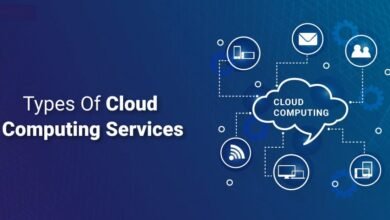6 Cloud Benefits for Developers in 2021

In 2015, cloud computing was a new concept in the language of everyone a few years ago, and few of them had the courage to look beyond this technology and to invest more in it. When the overall budget of the cloud was $2.8 billion in 2015, the cloud budget in 2020 saw a massive surge, namely more than $330 billion. Nothing is more exciting than a part of the evolution and the development of technology.
Related: Jazz Internet Packages 2021: 3G, 4G Daily, Weekly, and Monthly
Tools and technologies are evolving, enabling programmers to develop even more convenient and modern software. The standards of your work, however, change at once: time for products to enter the market needs to be reduced, as well as errors in the code very quickly removed. A virtual private cloud helps these challenging tasks to solve. We propose a more detailed analysis of the benefits of clouds compared to traditional development tools.
AI in Cloud Computing
The unforeseen peak of AI was clearly achieved and technology contributed to the business process revolution. Pairing AI and cloud computing not only helped organizations, but also saves cost and agility, which is vital to the cloud, to be better-effective, strategic, and insight-driven. Furthermore, AI may have a major impact on the value of a number of companies. The value AI added in cloud computing by McKinsey estimates could amount to up to 15,4 billion dollars.
AI simplifies working loads and automates repetitive tasks for IT Infrastructures. With the evolution of technology, AI can help create better, widely independent processes.
Related: iOS 14: How to Setup Default Email and Browser App
Backup and Disaster Recovery
Rapid allocation of resources offers the benefit of all development teams. Programmers often require different elements of infrastructure from developing and testing environments to new application servers and operating systems with which they can experiment.
Such work can take several days, even weeks, without cloud technology for the support service.
Developers are able to build new environments quickly using the cloud, from websites to virtual servers and databases. In addition, cloud technologies provide an ever-expanding list of services, you can also check on Serverspace. This approach enables development teams to use the latest technologies. Furthermore, developers may quickly decommission them and stop paying for them if they do not need some resources.
Scalability
The ability to scale is one of the major advantages of cloud systems. Compare your hosting with conventional hosting by selecting, purchasing, installing, and configuring equipment that will work on every node of your system—web servers, application server, database server, switches, and routers for internet access. Applications of high availability require load balancers and server clusters that need costly SANs (storage area networks). All of this requires thorough scheduling and enormous costs, which can slow the process.
Related: 8 Crucial Ways Technology Has Redefined Businesses
Cost
Costs savings and the ability to start out with a small, cheap infrastructure are the next major benefits of the cloud and then increase it as the cargo grows. These economic advantages include:
No upfront investment: The DPCs (own data centers) require large investments at an early stage. The analysis of current and future equipment demands will also take a lot of time and effort. With increasing customer and server load, additional infrastructure changes will be required, requiring new software and hardware.
Payments only for resources used: Most providers of cloud accounts only count the resources you use. If need be, the number of servers, amount of memory, processor cores, and other parameters can be increased or decreased, which means that you can control your costs very flexibly.
Different models of cloud technology
The use of clouds cannot be reduced to conventional approaches. These technologies offer customers a variety of possibilities for their particular requirements.
The two key service models of the cloud are Service infrastructure (IaaS) and Service Platform (PaaS). Both models have their advantages and, if necessary, the advantages of every model can be combined.
IaaS: The IaaS model is a rental infrastructure that is accessible via dedicated channels of communication or via the Internet. Virtual servers and networking, storage, and security systems are part of the infrastructure. IaaS customers manage the infrastructure themselves, buy and install the software they need. An IaaS service provider may provide operating systems for virtual servers.
PaaS: Model PaaS supplements the IaaS with multiple services. Services such as operating system health, web servers, application servers, mail and database servers, and development surroundings. In this case, only the customer is involved in application development and deployment.
Depending on the customer application, all components required can be easily scaled.
Related: Top 6 Advantages of Using Technology in Education for Students
Geographical coverage
The fact that clouds cover several areas, countries or even the entire planet at the same time provides another advantage of cloud technology. You can use the cloud to place your application where it is closer geographically to your customers instead of relying on a single website to host your application or to spend resources building further webs. Cloud applications provide better performance for customers, regardless of their locations, with traffic management and replication.
Content delivery networks (CDN), even if the application is located in one location, can also be used to increase geographic reach. CDN is a wide range of servers in different cities or countries. These servers answer web content users’ requests. The CDN is used to access Web, Audio, Video, Images, and other files quickly. In addition, CDN offers the opportunity to reduce the number of requests directly to the web application, so that this application can be improved.
Conclusion
The digital transformation will continue in 2021, a trend that many enterprises aim to follow. With 5G, the introduction of multi-cloud IT infrastructure, and the increased daily use of AI and ML, organizations are preparing to be involved in the following revolution.
There’s a lot to keep an eye on in 2021, but we look forward to hearing from you. In the comments below, please let us know.












One Comment